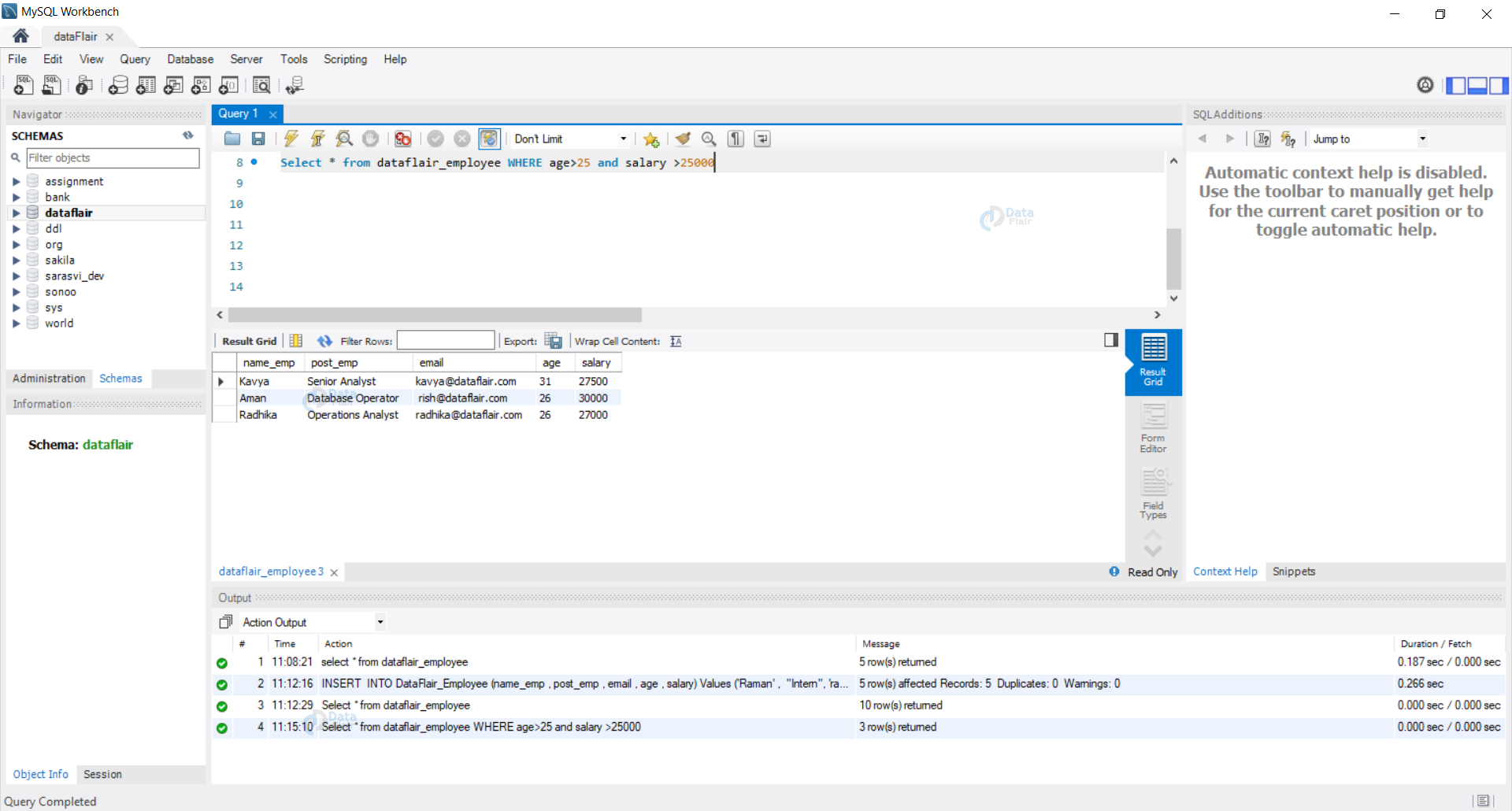Explain the Different Clauses of Sql Query
SELECT select_list INTO new_table_ FROM table WHERE search_condition GROUP BY group_by_expression HAVING search_condition ORDER BY order_expression ASC DESC. With this information we can fine-tune our.

Sql Clauses Know List Of Main Types Of Sql Clauses
The SQL WHERE Clause.

. The OR operator is used to combine multiple conditions in an SQL statements WHERE clause. ANSI-standard SQL specifies five types of JOIN clauses as follows. Migration solutions for VMs apps databases and more.
This is the default type of join if no specific JOIN type is specified. SELECT EMP_ID LAST_NAME FROM EMPLOYEE. SQL_statement can be any of these commands.
It can also happen if the GROUP BY and ORDER BY clauses include different columns or in different order. I have explained lot of advanced sql topics like materialized view in sql partitioning techniques in oracle. RIGHT JOIN - List and explain the different types of JOIN clauses supported in ANSI-standard SQL.
SQL Clauses 1. For serving web admin. SELECT INSERT UPDATE DELETE CREATE TABLE AS SELECT CREATE REMOTE TABLE.
In many cases this can also result in a performance penalty. SQL WHERE Clause In MySQL we use the SQL SELECT statement to select data from a table in the database. You should use the WHERE clause to filter the records and fetching only the necessary records.
A JOIN clause is used to combine rows from two or more tables based on a related column between them. The complexity in the select clause is showed here. Notice that the CustomerID column in the Orders table refers to the CustomerID in the Customers table.
The query_partition_clause breaks the already set into distributions or collections of data. The SQL WHERE clause is used to specify a condition while fetching the data from a single table or by joining with multiple tables. Returns all rows from the left table and the matched rows from the right table.
The following is the syntax of a SELECT statement that references a table with almost all possible clauses included. We use the WHERE clause to specify conditionals in our SQL query. The UNIQUE operator searches every row of a specified table for uniqueness no duplicates.
Define a sql developer connect script shown below are different clauses. SQL GROUP BY statement is used to arrange identical data into groups. It is used to arrange the result set.
Where Clause in SQL. The NULL operator is used to compare a value with a NULL value. The WHERE clause is used to filter records.
Used to query and transact the database. Like aggregation functions window functions perform calculations based. In order for a fuss to qualify as a relational table it must where a numerous key.
The OVER clause is essential to SQL window functions. Returns all rows for which there is a match in EITHER of the tables. In this article we will explain how you can define different kinds of window frames using the OVER clause.
In this article i will try to explain different hierarchical queries in oracle sql with real life examplesHierarchical queries are useful in reporting purpose and when user wants to fetch the data from hierarchical structure. Then we can create the following SQL statement. The following are the various SQL clauses.
SQL ORDER BY Clause The ORDER BY clause is used in SQL for sorting records. Different operators used here are listed below. Hierarchical queries.
The GROUP BY statement follows the WHERE clause in a SELECT statement and precedes the ORDER BY clause. Often interchangeably called CTE or subquery refactoring a WITH clause defines a temporary data set whose output is available to be referenced in subsequent queries. The name of the Table used is displayed here.
Window functions are one of SQLs most powerful resources but they are not frequently used by the average SQL developer. Conceptually a FULL JOIN combines the effect of. Where clause can be used in the update and delete statements as well as to perform operations on the desired data.
The relationship between the two tables above is the CustomerID column. In practice this order of execution is most likely unchanged from above. Returns all rows for which there is at least one match in BOTH tables.
The ordering of the result can also be set manually using asc for ascending and desc for descending. This shows the number of partitions of the table joined in the query. SQL GROUP BY Clause The GROUP BY clause is.
When using a Where clause we need to mention at least one condition. The WITH clause in SQL was introduced in standard SQL to simplify complex long queries especially those with JOINs and subqueries. The GROUP BY statement is used with the SQL SELECT statement.
In the above case it is very simple. The order by clause should always be used in the last of the SQL query. The SQL SELECT statement returns a result set of records from part or more tables A SELECT.
Optimizing a slow query using MySQLs EXPLAIN. It represents the id of the query which is to be explained. The SQL statement on which EXPLAIN will run.
Return the query plan with recommendations to optimize the SQL statement performance. The GROUP BY statement is used with aggregation function. The following SQL statement selects all the customers from the country Mexico in the Customers table.
LEFT JOIN or LEFT OUTER JOIN. WHERE Clause in SQL It is an integral part of any query and allows us to apply constraints on the query output. Logical operations in the SQL which is true or False are performed by the Logical Operators.
It is used to extract only those records that fulfill a specified condition. Using filesort - MySQL is forced to perform another pass on the results of the query to sort them. SELECT col name expr logical operator col name expr FROM tablename WHERE logical operator arithmetic operator.
FULL JOIN or FULL OUTER JOIN. The best way to learn the WITH clause in SQL is through. WHERE CITY Seattle ORDER BY EMP_ID.
In Example 622 the data BY clause builds different groups for several possible. SQL Clauses and Its Types Syntax and Example Part-2 1. SELECT Clause in SQL Select clause is used to query the database and display the output.
If the given condition is satisfied then only it returns a specific value from the table. The phases involved in the logical processing of an SQL query are as follows. SELECT col1 col2.
15 rows Different clauses available in the Structured Query Language are as follows.



No comments for "Explain the Different Clauses of Sql Query"
Post a Comment